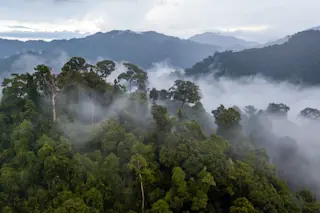Believers say it is a discovery that will rewrite the history of the world. The steep hills outside the small Bosnian city of Visoko have been climbed, poked, and scraped by a small army of both trained and amateur archaeologists for the past three years in a quest to reveal a 12,000-year-old secret. Each balmy summer brings a swarm of volunteers, many wearing identical yellow T-shirts, who strip away soil and vegetation from the hillside while throngs of tourists hover at the edges, eager for a glimpse of what is said to lie beneath the dirt: the world’s oldest and largest pyramids, more vast and ancient than those in Egypt, built by a mysterious and highly advanced civilization that has been long forgotten—until now.
At the center of it all stands Sam Osmanagich, the charismatic head of the Bosnian Pyramid of the Sun Foundation and the originator of this big ...















